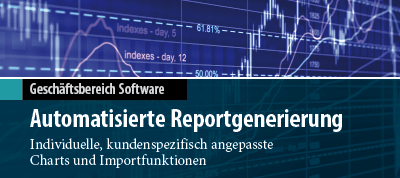What's new in Gaussian 09
Gaussian 09 offers new features and performance enhancements which will enable you to model molecular systems of increasing size, with more accuracy, and/or under a broader range of real world conditions. We will introduce you to the most important of these capabilities here. For more information, consult the Gaussian 09 User's Reference, which is also available online here.
Model Reactions of Very Large Systems with ONIOM
Gaussian's ONIOM facility offers 2 and 3 layer ONIOM calculations using any applicable method for any layer and supporting both MO:MM and MO:MO models. All molecular properties can be predicted by ONIOM calculations, and standard program features are all supported (e.g., wavefunction stability calculations).
The ONIOM facility has been significantly enhanced in Gaussian 09. For example, it now includes electronic embedding for MO:MM transition structure optimizations and frequency calculations (whereby the electrostatic properties of the MM region are taken into account during computations on the QM region). It also provides a fast, reliable optimization algorithm that takes the coupling between atoms in the model system and those only in the MM layer into account and uses microiterations for the latter between traditional optimization steps on the model system. Gaussian 09 provides many additional enhancements to the ONIOM facility, including the following:
- Transition state optimizations.
- Much faster IRC calculations.
- Analytic frequency calculations including electronic embedding, with a specialized algorithm for very large MM regions.
- Calculations in solution.
- Enhanced customizable MM force fields.
- New implementations of AM1, PM3, PM3MM, PM6 and PDDG semi-empirical methods with true analytic gradients and frequencies.
- A powerful, flexible facility for constructing ONIOM initial guesses using different guesses for each layer, including the results of previous calculations.
- General performance enhancements.
Study Excited States in the Gas Phase and in Solution
Gaussian 09 includes many new features for studying excited state systems, reactions and processes:
- Analytic time-dependent DFT (TD-DFT) gradients, allowing for DFT-quality optimizations for excited state structures.
- The equations of motion coupled cluster singles and doubles (EOM-CCSD) method, a high accuracy method comparable to CCSD for the ground state.
- State-specific solvation excitations and de-excitations.
- Franck-Condon and Herzberg-Teller analyses (and FCHT).
- Full support for CIS and TD-DFT calculations in solution (equilibrium and non-equilibrium).
Enhanced Solvent Effects Capabilities
Gaussian 09 provides significantly enhanced solvation features. In addition to the excited state features mentioned above, the SCRF facility also includes a new implementation incorporating a continuous surface charge formalism that ensures continuity, smoothness and robustness of the reaction field, and which also has continuous derivatives with respect to atomic positions and external perturbing fields. This results in faster, more reliable optimizations (comparable in job time to ones in the gas phase) and accurate frequency calculations in solution. Gaussian 09 also provides the SMD method for predicting absolute solvation energies and partition coefficients.
Additional Spectra Prediction
- Analytic HF and DFT first hyperpolarizabilities and numeric second hyperpolarizabilities.
- Analytic static and dynamic Raman intensities (HF and DFT).
- Analytic dynamic ROA intensities (HF and DFT).
- Enhanced anharmonic frequency calculations.
New and Enhanced Methods
- Analytic gradients for the Brueckner Doubles (BD) method.
- Many new DFT functionals, including ones incorporating long range corrections, empirical dispersion, and double hybrids. See this page.
- Restricted open shell (RO) calculations for MP3 and MP4 energies and CCSD energies.
- New implementations of AM1, PM3, PM3MM, PM6 and PDDG semi-empirical methods with true analytic gradients and frequencies. Semi-empirical parameters also fully customizable. Solvent effects are also supported with these methods.
Ease-of-Use Features
- Reliable restarts of many more calculation types.
- Freezing atoms by type, fragment, ONIOM layer and/or PDB residue.
- Selecting and sorting normal modes of interest during a frequency calculation, and saving and reading normal modes to and from the checkpoint file.
- Saving post-SCF amplitudes to the checkpoint file for future reuse as the initial guess for a calculation with a larger basis set.
- Population analysis of individual orbitals.
- Fragment-based initial guess and population analysis.
- Support for PDB information: atom and residue names, residue numbers, chain IDs, and secondary structures.
Performance Improvements
We have made substantial performance improvements throughout the program. Some of the largest speedups include optimizations for large molecules, frequency calculations on large molecules (as much as 16x in parallel), IRC calculations (~3x faster), and optical rotations (~2x faster).














